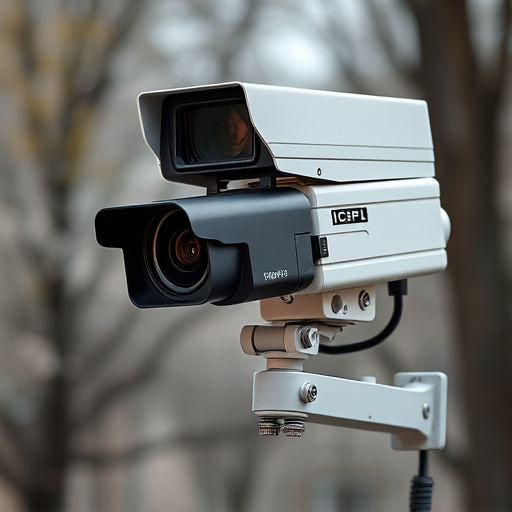Dummy security cameras, appearing real but without recording capabilities, offer cost-effective crime deterrence. Motion detection technology enhances their visual deterrent effect, though research on their impact is mixed. While they may not reduce criminal activity significantly, these decoys influence potential intruders' behavior and contribute to overall security measures. Advanced home security solutions like biometric access control and smart locks, coupled with AI-driven systems, offer more robust protection.
- Understanding Dummy Cameras: A Brief Overview
- Motion Detection: How They Work
- Deterring Crime: Are They Effective?
- Advantages and Disadvantages of Using Imitation Cameras
- Alternatives and Future Trends in Home Security
Understanding Dummy Cameras: A Brief Overview
Dummy security cameras, also known as imitation or fake cameras, are a popular choice for home and business owners looking to enhance their security while keeping costs down. These devices resemble real security cameras, but they don’t have any actual recording capabilities. Their primary purpose is to deter potential criminals by providing the appearance of enhanced surveillance.
The effectiveness of dummy cameras in crime prevention is a topic of discussion. While some studies suggest that visible security cameras can act as a strong deterrent, simply because they indicate that someone might be watching, the impact of dummy cameras is less clear. However, even if they don’t record footage, their presence can still send a powerful message to intruders, encouraging them to choose easier targets. Thus, in terms of deterring crime, these imitation devices play a vital role in creating an environment where potential offenders may think twice before attempting any malicious activities.
Motion Detection: How They Work
Motion detection is a key feature of imitation security cameras, enabling them to capture footage only when necessary, enhancing their deterrence value. These devices use advanced technologies like infrared sensors, laser grids, or image analysis algorithms to track movements within a defined field of view. When motion is detected, the camera activates, capturing high-resolution video that can provide crucial evidence for any potential security incidents.
The effectiveness of dummy security cameras in deterring crime lies in their ability to simulate real surveillance. By strategically placing these imitation cameras around sensitive areas, criminals are likely to think they’re being watched, thereby reducing the likelihood of unauthorized activities. This psychological impact, combined with the actual footage captured when motion is detected, can significantly enhance overall security measures.
Deterring Crime: Are They Effective?
Dummy security cameras, often referred to as imitation or fake cameras, have gained popularity as a potential crime deterrent. The concept is simple: by installing realistic-looking but non-functional cameras, criminals may be persuaded to think they are being watched, thus deterring them from committing offenses.
While the effectiveness of these devices has been questioned, many advocates argue that even if they don’t actively prevent crimes, they can still serve as a powerful psychological tool. The mere presence of dummy security cameras could create an environment where potential offenders feel increased surveillance, potentially leading to a decline in illegal activities. However, studies on their actual impact remain mixed, suggesting that their deterrence value may vary based on factors like placement, quality of imitation, and local crime trends.
Advantages and Disadvantages of Using Imitation Cameras
Alternatives and Future Trends in Home Security
In addition to dummy security cameras, several other innovative solutions are reshaping home security landscapes. Biometric access control systems, for instance, offer advanced protection by recognizing fingerprints or facial features, ensuring that only authorized individuals gain entry. Smart locks and automated gates further enhance security through remote monitoring and control via mobile devices.
Looking ahead, the future of home security is likely to be driven by advancements in artificial intelligence (AI) and Internet of Things (IoT) technologies. AI-powered security systems can analyze real-time data from multiple sensors, including cameras, to detect anomalies and potential threats more accurately. Integrated IoT devices enable seamless communication between different security components, creating a unified and responsive security network. While dummy security cameras may not directly deter crime, these emerging trends promise enhanced protection and peace of mind for homeowners.
While dummy security cameras may not actively capture footage, their presence can significantly deter potential criminals. By mimicking real surveillance systems, they create a perception of enhanced security, making properties less attractive targets. However, their effectiveness largely depends on placement and the overall security strategy. As technology advances, alternatives like smart home security systems and integrated AI offer more advanced solutions. Ultimately, combining these innovative tools with robust security practices can provide homeowners with comprehensive protection, ensuring peace of mind in today’s digital age. Do Dummy Security Cameras Deter Crime? While their impact may not be as tangible as live feeds, the strategic use of imitation cameras can play a valuable role in deterring criminal activity.
